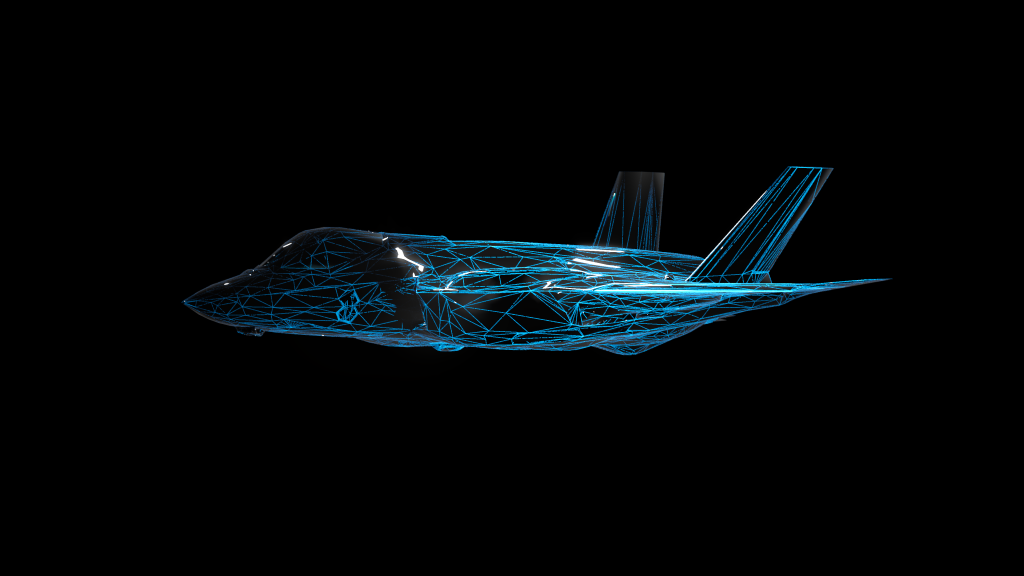Operational Environment, Mission Need, and the Future Fight

Outpacing and outmatching the threat
Almost 1,000 F-35s have been delivered around the world to date. Each F-35 is equipped with an integrated electronic warfare (EW) system that provides 360-degree, full-spectrum situational awareness and rapid-response capabilities, allowing the aircraft to evade, engage, counter, and jam threats, and reach well-defended targets.
The F-35 is expected to stay in service until 2070 and was designed for continual upgrades to help it outpace emerging threats throughout its six-decade service life. As part of a broader strategy focused on whole-life mission effectiveness, the U.S. Department of Defense entrusted BAE Systems to design and manufacture the next-generation "Block 4" version of the AN/ASQ-239 EW system.
BAE Systems engineers, manufacturers, and program teams are hard at work keeping F-35s relevant against evolving electromagnetic threats.
Operational environment
The fight is changing. The environment in which F-35s must operate is contested, meaning that pilots cannot expect the freedom to conduct their missions without opposition. From an EW perspective, this means the presence of electromagnetic threats that have the ability to detect aircraft and counter and jam electromagnetic signals (the waves of energy used for communication, navigation, and targeting).
The electromagnetic environment is also congested, packed with civilian, commercial, and friendly military signals that make it difficult to isolate and identify threat signals. At the same time, advanced threat systems attempt to avoid detection by various means, including the use of networked signal emitters, complex pulse patterns, and adaptive waveforms. As the number of simultaneous threats increases, the complexity of the battlespace increases.
The ability to communicate, navigate, and target via electromagnetic energy allows armed forces to identify, track, and engage targets. EW is focused on enabling the ability to engage targets while denying adversaries the same capability.
In the most challenging environments, F-35 pilots will face well-equipped near-peer adversaries with advanced EW capabilities, and in order to survive and execute their missions, they need stealth (i.e., low observability to radars) and situational awareness (i.e., identification and geolocation of air defense systems, enemy aircraft, and inbound missiles). When survivability, and mission success all depend on how well you can operate in the electromagnetic spectrum, possessing cutting-edge EW capabilities is critical.
One of the most important aspects of the AN/ASQ-239 system is its ability to detect a broad spectrum of electromagnetic signals in a 360-degree sphere around the F-35 at long range. It detects signals passively without emitting energy, making the F-35 itself less observable to adversaries. The systems' "staring" sensors are embedded throughout the aircraft, allowing immediate detection of electromagnetic signals, giving pilots critical situational awareness and allowing them to act first. By delivering long-range, all-aspect (360-degree) broad-spectrum EW capabilities, the F-35's EW system also increases the probability of signal intercept.

Mission need – rapid response
"Block 4 AN/ASQ-239 is designed to detect every relevant threat pulse as soon as it happens," said Lisa Aucoin, vice president of F-35 Solutions at BAE Systems. "We're focused on delivering unprecedented situational awareness that enables rapid responses to multiple simultaneous threats."
In combat, situational awareness is often the enabler for making it back to base. In today's world of contested and congested airspace, it is critical to detect the enemy's electromagnetic activity from as far away as possible, regardless of its orientation, wavelength, or however carefully it tries to obscure itself. The key to survivability is the rapid response to those signals – exactly what Block 4 AN/ASQ-239 is designed to do.
The future fight – outpace and outmatch the evolving threat
BAE Systems' Block 4 EW systems will include significantly upgraded hardware and software that improves sensing and signal-processing capabilities. New, high-performance sensors will boost the system's ability to detect difficult-to-observe threats and more threats simultaneously.
The F-35's EW system was designed to provide dominance over the electromagnetic spectrum, but it is also a force multiplier. The situational awareness it provides can be shared with friendly forces.
As BAE Systems advances Block 4 capabilities for the F-35, it is also advancing its Eagle Passive Active Warning Survivability System (EPAWSS) for F-15 fighter jets. At the heart of its systems is the platform-agnostic Storm EW™ spectrum warfare suite with proven, common modules that enable the accelerated delivery of EW capabilities through software and firmware upgrades broadly across fleets, reducing engineering and life cycle costs.
BAE Systems teams are working to ensure that the U.S. and its allies dominate the spectrum and have EW capabilities at the speed of need.




